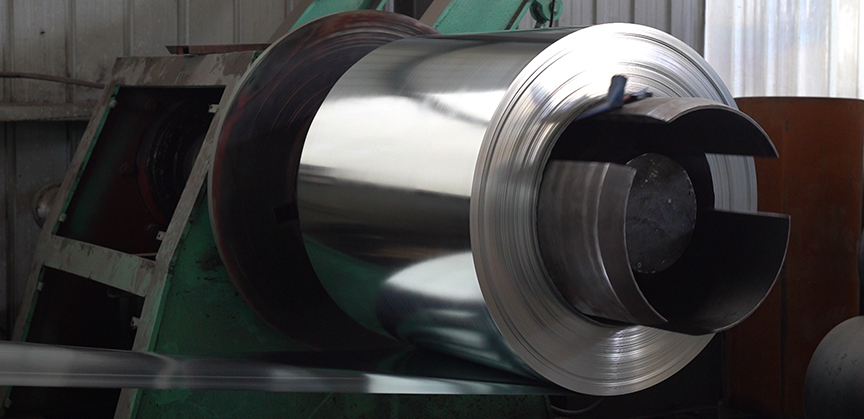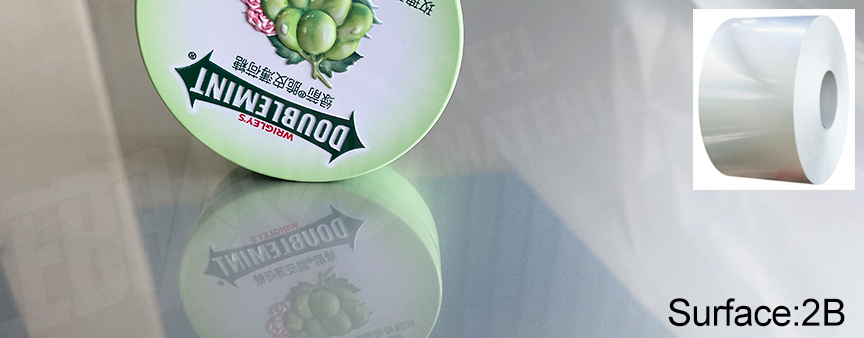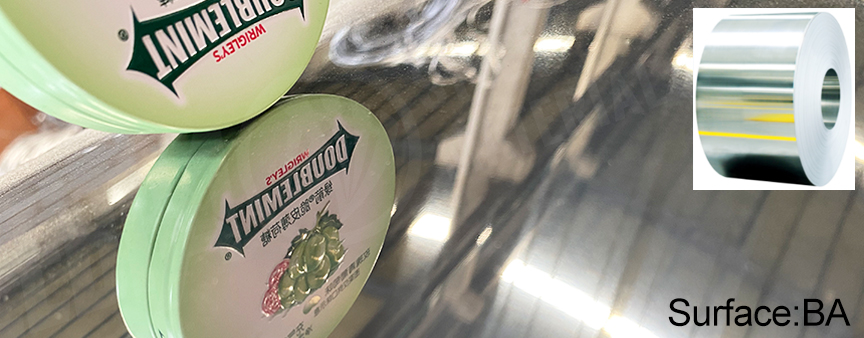


2B:Surface overview: After the material is cold-rolled and rolled, the strip is continuously annealed to change the structure grain and the mechanical properties of the material to meet the mechanical properties required by the customer; then electrolysis and pickling are used to remove the oxide scale on the surface of the steel strip, and then adjusted Quality rolling and stretching corrects the plate shape and enhances the surface fineness.
Process route: raw material NO.1/2E—rolling—degreasing cleaning—annealing—electrolysis—pickling—tempering and rolling—stretching and straightening—finished coil/plate
Covered steel grades: 200 series, 300 series, 400 series Thickness range: 0.25mm-3.0mm
BA:Surface overview: After 2E material is rolled by high-precision 20-roll cold rolling, degreasing and bright annealing production lines are used to make the strip annealed in an oxygen-free environment to change the structure, grain and mechanical properties of the material to meet the mechanical properties required by the customer; Quenching and rolling to correct the shape and improve the surface fineness.
Process route: raw material 2E—20 roll rolling—vertical/horizontal bright annealing—tempered and tempered rolling—coil/plate finished product
Covered steel grades: 200 series, 300 series, 400 series Thickness range: 0.25mm-1.5mm
 English
English